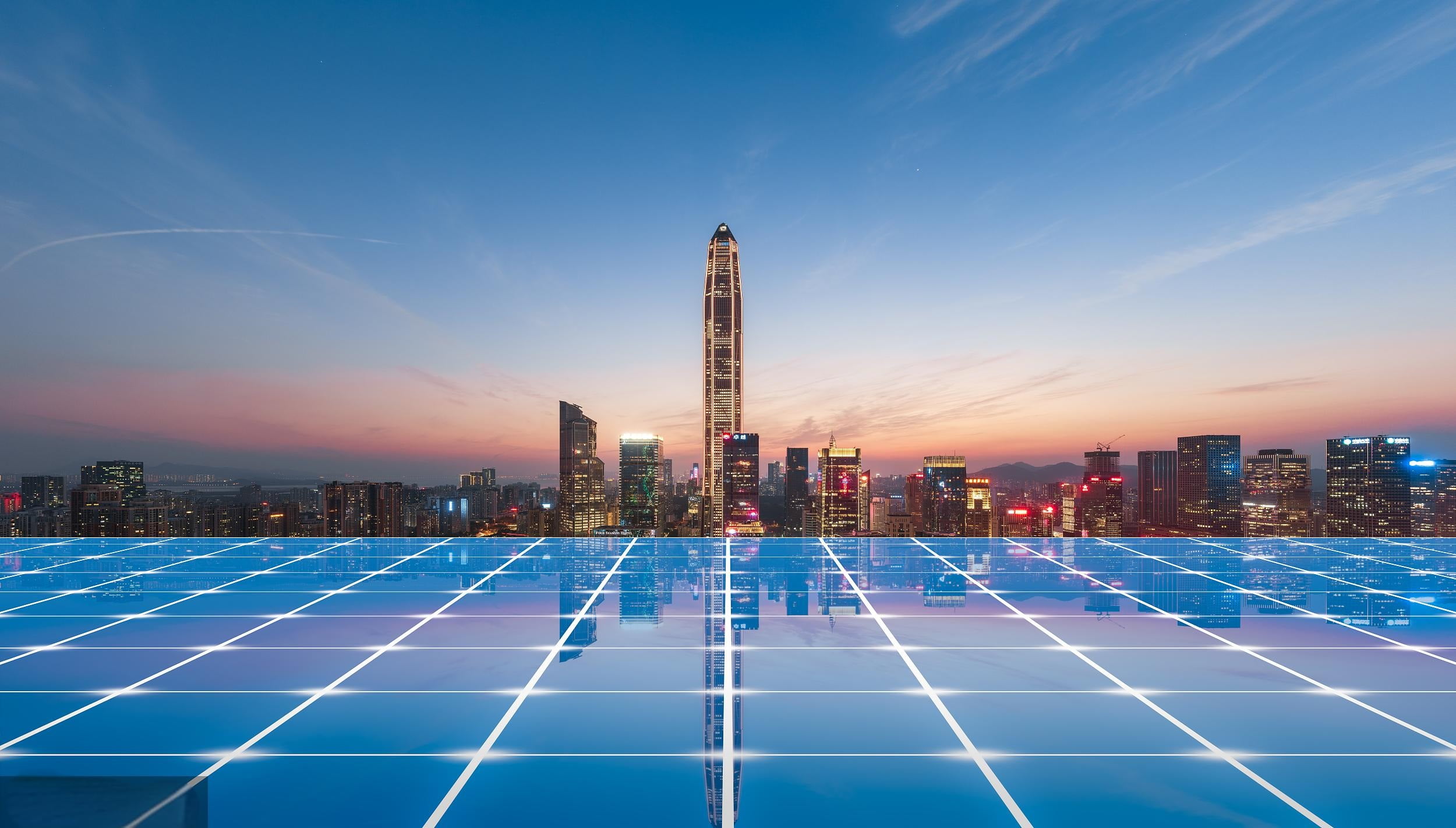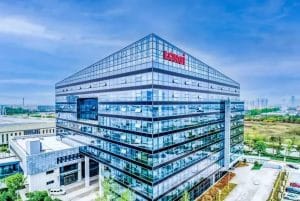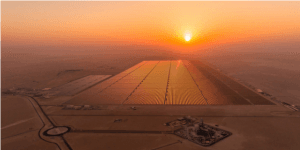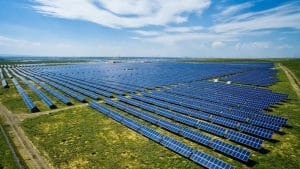The leading silicon wafer company unexpectedly announced a price increase.
On August 27, leading silicon wafer companies Longi Green Energy and TCL Zhonghuan announced price increases. The photovoltaic sector’s stock price rose during the session.
As a link in the photovoltaic industry chain, the reason why the price increase of silicon wafers has attracted market attention is related to its previous “continuous decline” and even falling below the cash cost. In recent years, the photovoltaic industry has seen a significant overcapacity, and prices in all links of the industry chain have continued to fall. The prices of polysilicon, silicon wafers, battery cells and other industry chains have been halved from their highs.
Product prices continue to decline, and corporate operations are under pressure. The semi-annual report shows that the revenue growth rate, gross profit margin and net profit of most photovoltaic industry chain companies have all declined sharply.
Although the price of silicon wafers has only increased slightly, the significance of its price increase is extraordinary.
The two leading silicon wafer companies announced price increases
On August 27, the latest quotation of Longi Green Energy silicon wafers showed that the N-type G10L quotation was 1.15 yuan/piece, and the N-type G12R quotation was 1.3 yuan/piece, and the new quotation was raised.
TCL Zhonghuan also announced that it would raise the price of silicon wafers. The adjusted N-type G10L and N-type G12R quotations were consistent with Longi Green Energy, and were raised compared with last week’s quotation.
Longi Green Energy’s stock price once rose from a drop of more than 1% to a maximum increase of 4% in the early trading. Longi Green Energy still rose 1.85% at the close, and TCL Zhonghuan’s price rose 1.72%. The photovoltaic sector as a whole rose in a straight line.
Longi Green Energy said that the company’s silicon wafer (quotation) has been adjusted recently. The price of silicon wafers has fallen below the cash cost. For the healthy development of the market and taking into account the supply and demand situation, the company moderately raised the price of silicon wafers, aiming to push the industry out of the quagmire of low-price competition through price adjustments and return to a healthy competitive environment.
In fact, there were signs of price increases in Longi Green Energy’s silicon wafer quotations. On July 31, Longi Green Energy stated on the investor interaction platform that according to market price calculations, the photovoltaic main chain has been losing money for several months, and even the prices of some links have been lower than its cash cost. Under such a price situation, the operating rate of the photovoltaic main chain has basically been adjusted to a low level. With the arrival of the peak demand season in the second half of the year, it will provide certain support for the price of the industrial chain. On the whole, the company believes that the current price of photovoltaic products is already at the bottom.
On August 27, Longi Green Energy’s silicon wafer quotation unexpectedly increased. The reason why it attracted market attention was related to the fact that its silicon wafer prices had been falling before, and even fell below the cash cost. Although the price of silicon wafers has only increased slightly, the significance of its price increase is extraordinary.
Since the second half of 2023, the photovoltaic industry has seen obvious overcapacity, and prices in all links of the industrial chain have continued to fall. The prices of polysilicon, silicon wafers, battery cells and other industrial chains have been halved from their highs.
Just last week, the price of silicon wafers continued to fall. According to data from the Silicon Branch of the China Nonferrous Metals Industry Association on August 22, the average transaction price of N-type G10L monocrystalline silicon wafers was 1.08 yuan/piece, a month-on-month decrease of 6.5%; the average transaction price of N-type G12R monocrystalline silicon wafers remained at 1.25 yuan/piece; the average transaction price of N-type G12 monocrystalline silicon wafers was 1.5 yuan/piece, a month-on-month decrease of 6.25%. Affected by the continued decline in prices, the market reported last week that the operating rate of large silicon wafer factories had even been reduced.
The Silicon Branch of the China Nonferrous Metals Industry Association pointed out at the time that the premium ability of large-size silicon wafers had been significantly weakened (calculated based on equal area equivalent), resulting in a relatively high concentration of silicon wafer inventory. The price cuts by leading companies accelerated inventory clearance, which directly led to a large drop in the price of large-size silicon wafers. In addition, after two weeks of rising silicon material prices, they began to stabilize, and the support for raw material prices gradually weakened.
Photovoltaic enterprises are under pressure
The photovoltaic industry has been expanding rapidly since 2021. At present, overcapacity has become a consensus. Since last year, the price war in the photovoltaic industry has intensified, and the prices of products in various links of the photovoltaic industry chain have continued to fall sharply.
AVIC Securities analyzed that the price of the photovoltaic industry chain is at a historical bottom, the prices of multiple links have broken the cost line, the expansion speed has slowed down significantly, and projects have been terminated or postponed frequently. According to CPIA data, the scale of termination/delay of silicon materials, silicon wafers, batteries, and components projects reached 300,000 tons/15GW/60GW/20GW respectively, and there are more than 20 related projects. Affected by overcapacity and low prices in the industrial chain, the industry’s operating rate is at a low level, the main chain link is about 60%, and the inventory remains high. Some companies have stopped production.
Product prices continue to decline, and corporate operations are under pressure. The revenue growth rate, gross profit margin, and net profit of photovoltaic industry chain companies have all declined sharply.
The difficulties faced by the photovoltaic industry are directly reflected in the loss reports of related listed companies. Judging from the performance of listed companies, the industry began to enter a state of general losses in the fourth quarter of 2023. The operating losses in the first quarter of this year further expanded. At present, the profit pressure in the second quarter is still relatively large.
According to the 2024 semi-annual report of TCL Zhonghuan, the leader in silicon wafers, the total operating income in the first half of the year was 16.213 billion yuan, a year-on-year decrease of 53.54%; the net profit attributable to the parent company was a loss of 3.064 billion yuan, compared with a profit of 4.536 billion yuan in the same period last year.
In the first half of the year, the photovoltaic module company Dongfang Risheng achieved operating income of 10.459 billion yuan, a year-on-year decrease of 40.59%; the net profit attributable to shareholders of listed companies was a loss of 963 million yuan, turning from profit to loss year-on-year.
Daquan Energy, a leading silicon material company, achieved revenue of 4.584 billion yuan in the first half of the year, a year-on-year decrease of 50.84%, and a net profit attributable to the parent company was a loss of 670 million yuan. It is reported that this is the first time that Daquan Energy has suffered a semi-annual loss since its listing on the Science and Technology Innovation Board in July 2021.
The profit pressure of the photovoltaic industry is relatively large, and the stock prices of related industry chain companies are also “falling continuously”.
Since November 2021, the photovoltaic sector has experienced dramatic market fluctuations. Wind data shows that as of now, the photovoltaic index has fallen 37.44% this year, and the cumulative decline has been nearly 64% since its 2022 high.
After experiencing bottlenecks and pain, positive signals are coming out
Although the photovoltaic industry is in its darkest hour, some positive signals continue to emerge.
Since the beginning of this year, the policy of photovoltaic industry has been favorable. On August 21, the National Development and Reform Commission and the National Energy Administration issued the “Implementation Plan for Large-scale Equipment Renewal in Key Energy Fields”, proposing that by 2027, the scale of equipment investment in key energy fields will increase by more than 25% compared with 2023, and equipment renewal and technological transformation will be achieved in photovoltaic and other fields. It also mentioned supporting the grid-type transformation of photovoltaic power stations. Previously, the National Development and Reform Commission, the Ministry of Finance and the National Energy Administration also jointly issued a document, emphasizing the adherence to the centralized and distributed photovoltaic policy route and strengthening the construction of large-scale wind power photovoltaic bases. In addition, the Electronic Information Department of the Ministry of Industry and Information Technology issued the “Standardized Conditions for Photovoltaic Manufacturing Industry (2024 Edition)” in July, strengthening policy guidance and putting forward requirements in technical indicators, capacity utilization and other aspects to promote the upgrading of photovoltaic industry.
In addition to policy support, there have been continuous signals of price stabilization in the photovoltaic industry recently. Recently, the price of N-type silicon material has stopped falling and rebounded. Industrial Securities believes that the increase is limited and difficult to sustain, and it is expected that the price will still hover at the bottom. Donghai Securities believes that since the silicon material production capacity has not yet been cleared, the price increase is expected to be less sustainable.
The upstream silicon material price has risen for two consecutive weeks. Donghai Securities believes that the stabilization of the silicon material price is expected to support the silicon wafer price. At the same time, it is expected that the domestic and foreign terminal pull will start in the second half of the year, and downstream companies are expected to rebuild inventory and increase procurement efforts, which will provide some support for silicon wafer demand.
Pacific Securities pointed out that in the third quarter of 2024, the prices of silicon materials, silicon wafers, and modules remained stable mainly due to cost support. The industry price has basically bottomed out, and the profits of some companies are also expected to bottom out and rebound.
Guosheng Securities issued a research report saying that growth is still an important bottoming factor in this round of photovoltaic downward cycle. The many problems encountered on the demand side are the bottlenecks and pains that photovoltaic power generation will inevitably encounter when it grows into the main energy source.
“The country has introduced a number of policies to support photovoltaic power generation, especially to solve the problem of consumption.” Guosheng Securities believes that large base projects are in full swing and centralized procurement bidding is still hot. It shows the strong growth of domestic demand. It is expected that the bidding situation in the second half of the year may reach a new high. The installed capacity potential that can be increased by large wind and solar bases is expected to start a new round of photovoltaic demand cycle.
Looking forward to the situation of the photovoltaic industry in the second half of the year, TCL Zhonghuan said that in the second half of 2024, the global photovoltaic industry is still at the bottom of the cycle, the industry market conditions have undergone fundamental changes, and the competition game has intensified. The company said that the global new energy market still has a large room for growth, and the global distribution of production capacity is unbalanced. The company’s management believes that the survival of the fittest in this round of photovoltaic manufacturing industry will help the industry’s long-term pattern optimization and profit recovery.




